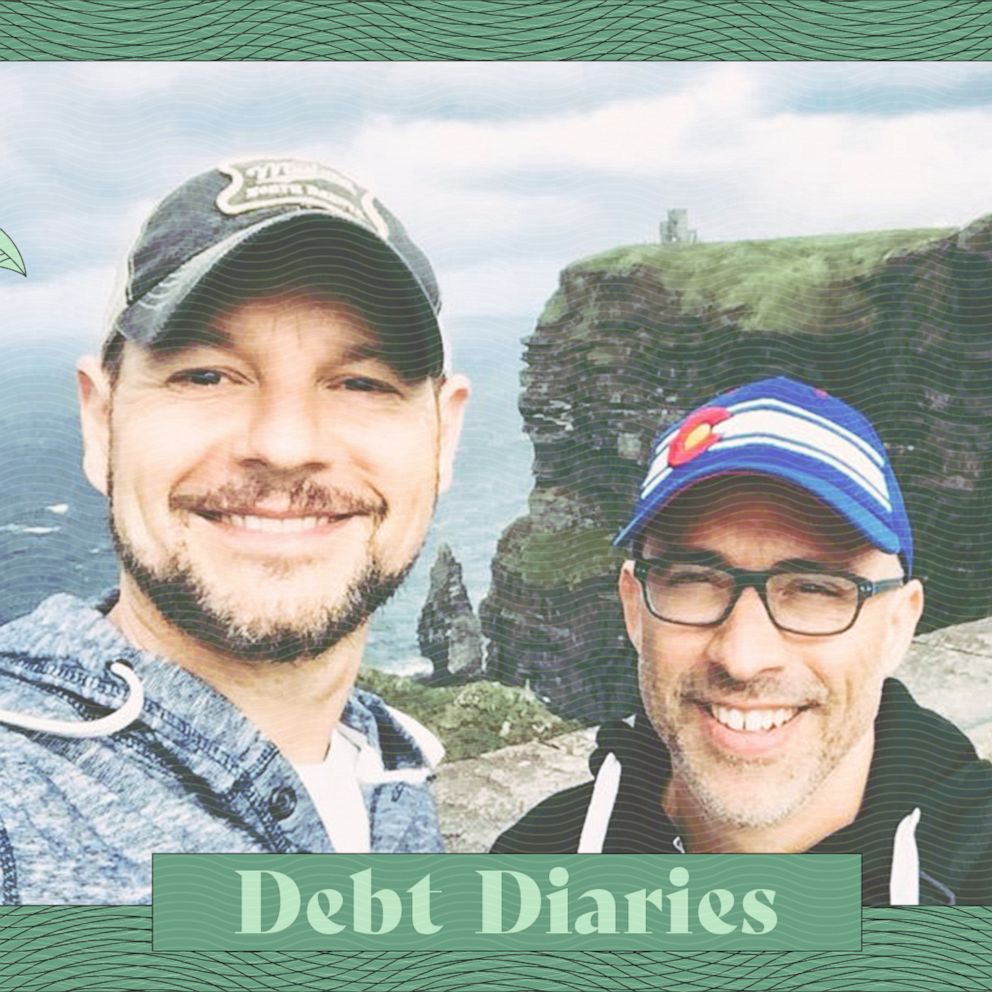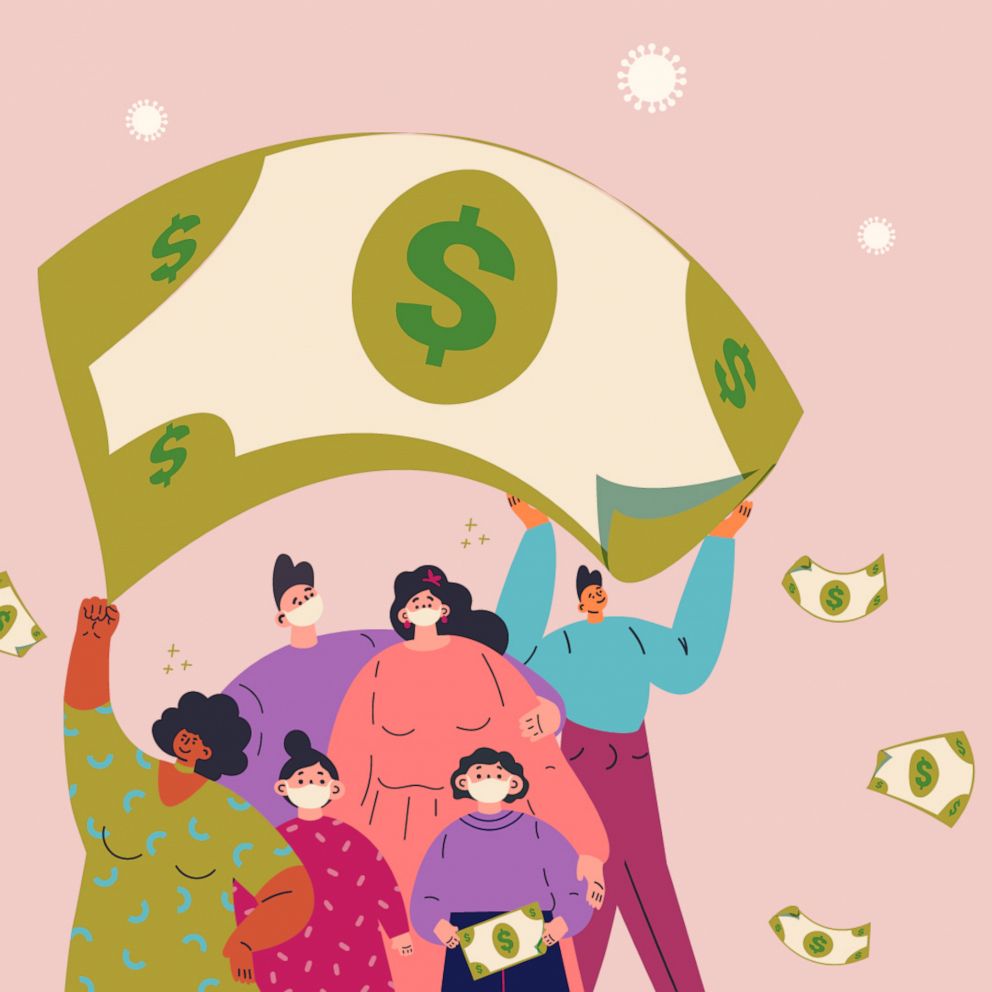The Debt S-L-A-Y-E-R Method helped her vanquish $30,000 in credit card debt in 1 year
Jordanne Wells of Wise Money Women shares tips for eliminating debt.
When Jordanne Wells' husband, Cedric, was about to turn 30 years old, she planned to buy him an ultimate flight simulator bundle -- a thoughtful gift given his interest in flying.
"I wanted to make this one special because it's a big, big number," she said. "I found the perfect gift. This was going to make me wife of the year."
But before she could press the "pay now" button, she started feeling anxious about the purchase. "I couldn't do it in good conscience," she said. "It was like, well, the money I'm spending on this, I could probably put it on the debt and I could probably get further ahead. It felt like that was a conversation I was always having."
"I can't keep sacrificing my life," she added in making minimum payments toward a credit card debt that was above $30,000. "I was pretty much done. It just flipped the switch in my head. It was like, 'No more. We're not having this conversation anymore. I have to get this under control.'"

Wells says her debt built up over several years. Having emigrated from Jamaica, she said she had to learn how to navigate the credit system in the U.S., along with having taken out student loans, and starting a family and buying home.

"I'm putting all my funds towards servicing this debt. It wasn't going anywhere. I was just keeping it alive, making the minimum payments, so that's pretty much how I ended up in more trouble than I thought I was in at the time."
Wells, who studied economics in college, is the founder of Wise Money Women, a space for millennial-aged women to learn about and how to manage their finances, as well as "The Wealth From Scratch Show," a podcast she hosts with her husband.

"I've always been fascinated with money and understanding how we make the decisions that we make," she said. She decided to finally take the reins on her debt and came up with a clever plan that helped her pay off $30,000 in debt in one year.
It's called the Debt S-L-A-Y-E-R Method, and it takes users through six sequential steps to assess and tackle their debt. Wells says unlike the debt snowball and debt avalanche methods, the Debt S-L-A-Y-E-R Method allows those who follow it to take into consideration such circumstances as time-limited balance transfers and interest rates, among other things. Here, she walks through her process.
1. Survey the Land
"I started out with surveying and taking a good look as to what was happening with my cards," Wells said. "That was the first part in getting really good clarity and it helps a lot to get you motivated, because you can see what's going to happen if you don't make a change."
2. Limit and Leverage
"You want to limit using more credit," Wells said. "I have two small kids ... I couldn't think of getting a second job, a third job, a fourth job to try and pay this down. I needed to work with the funds that I had to make it as optimized as possible. That meant getting my expenses lowered. And then using those extra funds that I was already used to paying into making extra payments.

3. Automate Your Payments
"Automation was to make sure I didn't damage my credit," Wells said. "I knew that I was getting prepared to potentially consolidate and get lower interest rates, so I needed to improve my credit while I was going through this process." To do that, she set up automatic payments to make sure she never missed a minimum payment each month, which she says, "free your mind from the mental gymnastics of bill payment." "You know your bills at the minimum are covered so you can focus your energy on other things, like earning more, saving more or other things you love," she added.
4. Yes, You Have to Pay Extra
"A lot of folks like to think that you can get away without having to pay extra," Wells said. "You're going to have to pay extra. That's how we get our debt paid off faster." Wells said she was "randomly" paying extra money all the time. "I paid $20 payments, I made $50 payments, I made a 60-cent payment," she said. "If I had any leftover change, if I didn't buy a Doritos from the vending machine, then I just put that dollar right into the debt right away." Wells points out that credit card interest is often calculated every day, so the more often you pay, the less you may pay in interest later, which also contributes to lowering minimum payments.
5. Evaluate Often
"As I was going through this process and I was making these payments, I was looking at what was working, what was keeping me motivated, what was getting me excited, what tools did I need to use and when am I most likely to end up in a bad situation. When you go through and look at how you're doing with it, you can keep the things that are working and you can drop the things that aren't," Wells said.
"A general rule of thumb folks can use is to pay extra on the debt with highest minimum payments but with the lowest balances first because it can help free up cash flow faster," she said. "Why? If the minimum payment is high, then paying off that debt means that you get a larger chunk of money back in your pocket for debt payoff or goals, and if the balance is low, then it'll get paid off very fast."

"At the end of the day, the most important plan for the extra funds is the one that will keep you focused on the path to the debt payoff," she said.
6. Ramping It Up
"When I evaluated and said, 'Yes, my credit score looks good' … then it was just gravy all from there because I was paying the same amount I was paying from the beginning, but it was working so much harder," Wells said. She adds that those using the method will want to look at opportunities to improve the terms of their debt, such as balance-transfer opportunities, consolidating loans or refinancing that can help them pay down their principal faster and pay less in interest.
Wells added that people will also want to look at their financial situation to see where they may need to pull back or where there are opportunities where it would be advantageous to "ramp up." For example, "If kids will be starting 'real school' and daycare costs will be lowered, that could open a chance to ramp up debt payment," she said. "Right now, I feel like a lot of us are in a state where we need funds to work harder. We cannot afford to not optimize, we cannot afford to not be resourceful with the funds that we do have."







